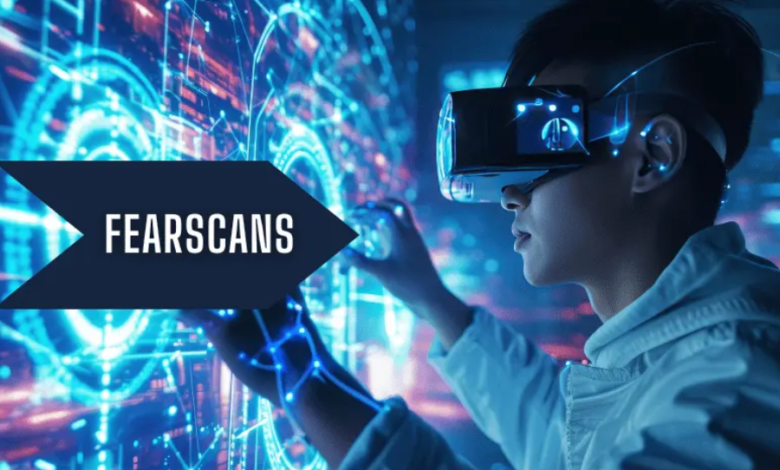What Are Fearscans?
Fearscans refer to the technology that detects and analyzes human emotions, specifically fear, through various biometric indicators like facial expressions, heart rate, and body language. This cutting-edge technology combines advanced algorithms, AI, and machine learning to decode fear responses in real-time.
Fearscans have emerged from developments in emotion recognition systems. These technologies are designed to track human reactions and behaviors to predict emotional states like fear. They rely heavily on input from devices like cameras, wearables, or even smartphones. Through this data, fearscans can determine levels of anxiety, stress, or panic, making them useful across various sectors.
The Evolution of Fearscans
The concept of fear recognition isn’t new—its roots trace back to the field of psychology, where studies on human emotions have been ongoing for decades. With the rise of modern technology, these studies have morphed into tangible tools like fearscans. Initially confined to research, fearscans now find applications in industries such as security, healthcare, and even marketing.
Advances in artificial intelligence and machine learning play a critical role in refining these systems. Algorithms have become more sophisticated, allowing fearscans to become more accurate in detecting subtle variations in emotional states. Additionally, improvements in hardware, such as high-resolution cameras and biometric sensors, have increased the precision and speed of fearscans.
Why Fearscans Matter in the Digital World
Fearscans hold immense potential in today’s data-driven world. From a security perspective, they offer advanced surveillance solutions capable of detecting suspicious behavior in real-time, helping prevent criminal activities or identifying threats. Businesses also leverage fearscans to analyze consumer responses to products and advertisements, leading to more personalized marketing strategies.
Moreover, fearscans can aid in healthcare settings. By monitoring patients’ emotional responses, medical professionals can identify signs of distress or fear, which could be indicative of underlying health conditions. This innovative approach to understanding human emotions allows for improved treatment methods and patient care.
The Mechanics Behind Fearscans
How Fearscans Operate: A Deep Dive into the Process
Fearscans operate by combining biometric data analysis with AI-driven software to assess fear responses. The process starts with sensors capturing input—facial expressions, skin conductance, and even pupil dilation. This data is then processed by sophisticated algorithms that interpret emotional cues.
The core of fearscans lies in its data processing and machine learning capabilities. Using extensive databases of emotional patterns, these systems learn to differentiate between various levels of fear and other emotions. The accuracy of fearscans depends heavily on the quality of data and the refinement of the algorithm.
Key Components of a Fearscan: Hardware, Software, and Algorithms
A fearscan system is built from several essential components:
- Hardware: Cameras, wearable sensors, or other biometric devices capture the necessary data.
- Software: Specialized AI software interprets the biometric inputs to gauge emotional states.
- Algorithms: These algorithms enable real-time emotional analysis, learning from large datasets to improve accuracy and reliability.
Frequently Asked Questions (FAQs)
- What Is the Definition of Fearscans?
Fearscans refer to advanced technology that analyzes human emotions, particularly fear, using biometric data. - How Reliable Are Fearscans in Detecting Emotions?
Fearscans are highly accurate but can sometimes have limitations due to environmental factors or data inaccuracies. - Can Fearscans Be Used for Criminal Profiling?
Yes, fearscans can be used in security and surveillance to assess suspicious behavior, but ethical concerns exist. - How Are Fearscans Different from Traditional Biometric Scans?
Fearscans specifically target emotional responses, unlike traditional biometric scans, which focus on physical traits like fingerprints or retina scans. - Are Fearscans Legal in All Countries?
Fearscans’ legality varies by country, with some regions implementing stricter regulations around biometric and emotion-detection technologies. - How Secure Is Data Captured by Fearscans?
Fearscans typically rely on encrypted systems to ensure data security, but concerns about privacy and misuse of data remain.
How Do Fearscans Work?
Fearscans operate by gathering biometric data through sensors that track a person’s physical reactions to stimuli. These sensors can include:
- Cameras that analyze facial expressions and micro-expressions.
- Heart rate monitors that detect changes in cardiovascular activity.
- Skin conductance sensors that measure sweat gland activity, often linked to stress or fear.
- Microphones that analyze voice pitch and tone for signs of stress or fear.
Applications of Fearscans
Fearscans have the potential to be used in numerous fields. Below are some of the most prominent applications:
1. Security and Surveillance
One of the most immediate applications of fearscans is in security. By using biometric data to detect fear in real-time, fearscans can help identify individuals who may be a threat or experiencing distress in high-risk situations, such as airports, train stations, or large public gatherings.
For example, fearscans can be integrated into surveillance systems to monitor crowds and detect suspicious behavior. This information can then be used by security personnel to prevent potential threats, such as terrorism or criminal activity.
2. Healthcare
In the healthcare sector, fearscans can assist in diagnosing patients with anxiety disorders or PTSD. By analyzing a patient’s physical response to certain stimuli, fearscans can help medical professionals determine whether the individual is experiencing fear or stress.
Moreover, fearscans can also be used to monitor patients during therapy sessions, offering real-time feedback to therapists on how their patients are responding emotionally. This could enhance treatment strategies and improve patient care.
3. Marketing and Consumer Behavior
In the business world, fearscans offer valuable insights into consumer behavior. By analyzing how customers emotionally respond to products, services, or advertisements, companies can tailor their marketing strategies to align with the emotional triggers of their target audience.
For example, fearscans might analyze a customer’s facial expressions or physiological responses while they are watching an advertisement. This data can then be used to tweak marketing campaigns to better resonate with the audience, ultimately increasing sales and brand loyalty.
Conclusion
Fearscans represent an exciting leap forward in emotion detection technology. From enhancing security measures to providing deeper insights into human behavior, fearscans offer a wide range of applications that can significantly impact many industries.














Leave a Reply